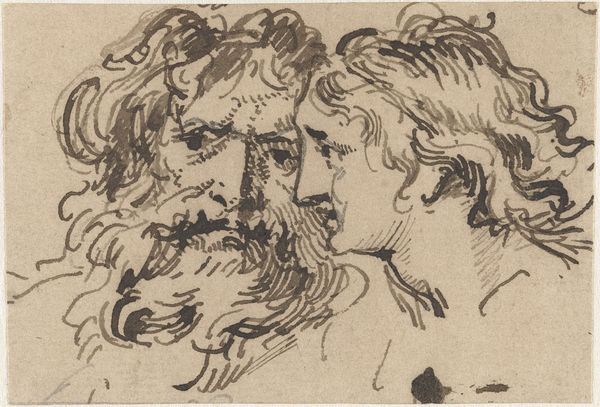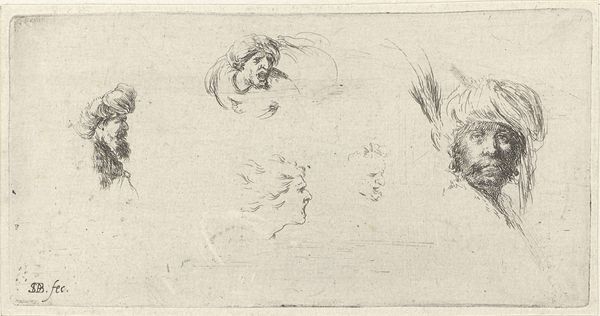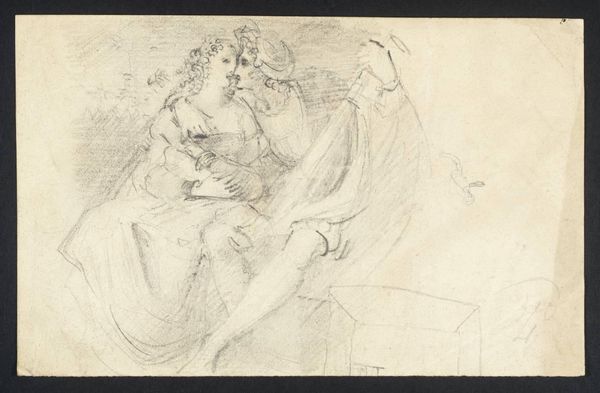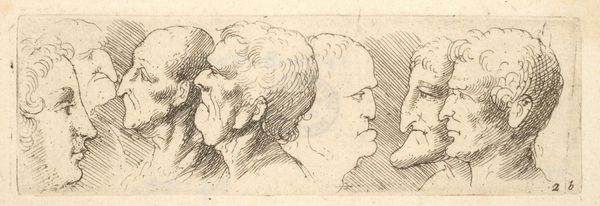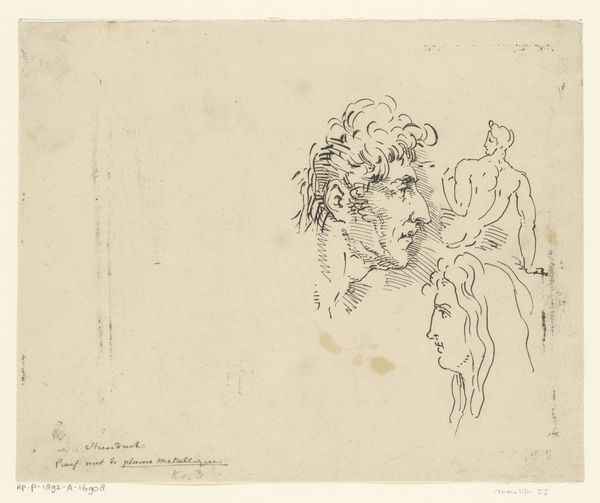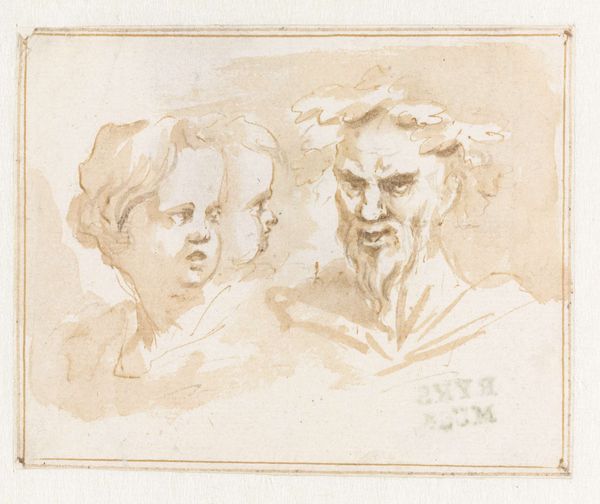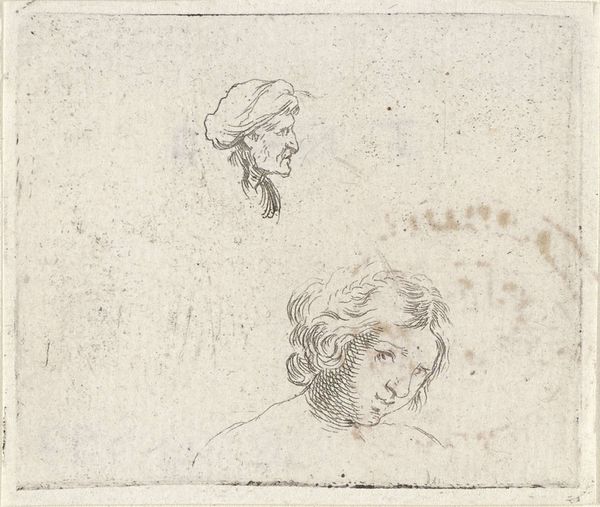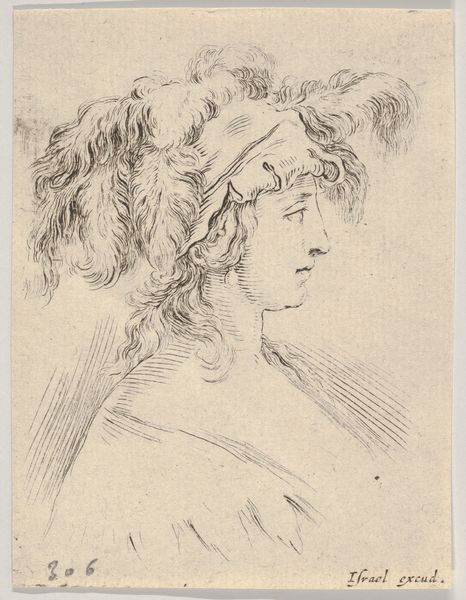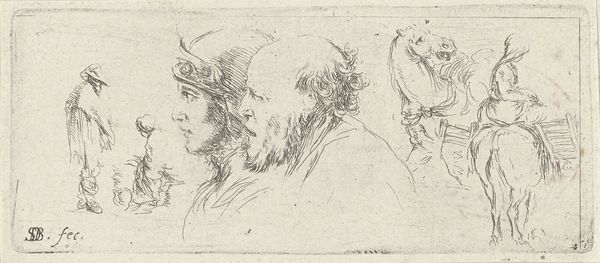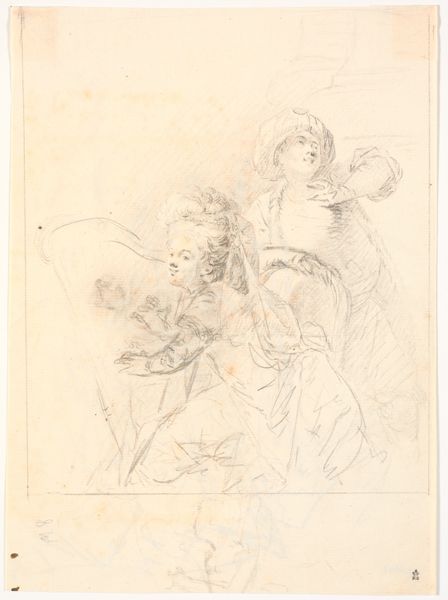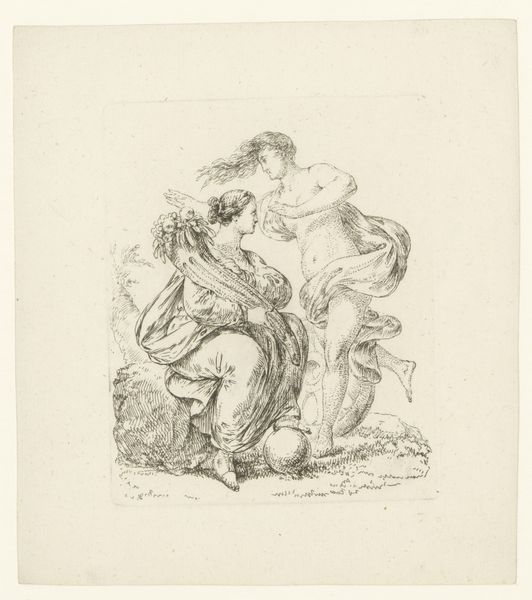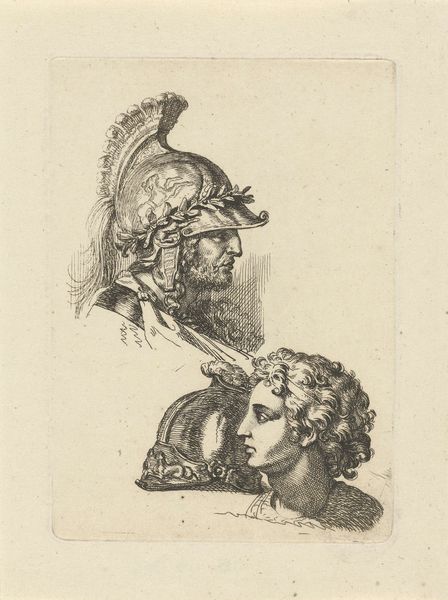
Dimensions: support: 117 x 197 mm
Copyright: CC-BY-NC-ND 4.0 DEED, Photo: Tate
Curator: This drawing, held in the Tate Collections, is by Thomas Worlidge, who lived from 1700 to 1766. It's called "Two Heads of Men, One a Caricature". Editor: It's a striking, almost unnerving sketch. The contrast between the relatively naturalistic face and the distorted one is quite bold. Curator: Worlidge was known for his etchings and drawings, often imitating the style of Rembrandt. He sought to capture character. Editor: And in this particular piece, what do you think he was trying to say about masculinity? The exaggerated features could speak to societal expectations, pressures... Curator: Perhaps. Caricature was a popular form of social commentary in the 18th century. Editor: True. It feels like a precursor to modern political cartoons, holding up a mirror to power, even then. Curator: It does make you wonder about the men depicted, their roles, and the artist's view of them. Editor: Exactly. The work becomes more than just a study of form, it becomes a question.
Comments
tate 8 months ago
⋮
http://www.tate.org.uk/art/artworks/worlidge-two-heads-of-men-one-a-caricature-t08618
Join the conversation
Join millions of artists and users on Artera today and experience the ultimate creative platform.
tate 8 months ago
⋮
In this drawing Worlidge has made a deliberate contrast between the caricatured head to the right, and the head to the left, which may be a self-portrait. During the 1750s and 1760s Worlidge made many character studies of heads, inspired by the old masters, notably Rembrandt. He was probably also influenced by the general interest at the time in the study of physiognomy: the art of discovering temperament and character from outward physical appearance and expression. The drawing, made with Worlidge's characteristic diagonal pencil strokes, is initialled 'TW' with a flourish at the bottom right. Gallery label, September 2004
